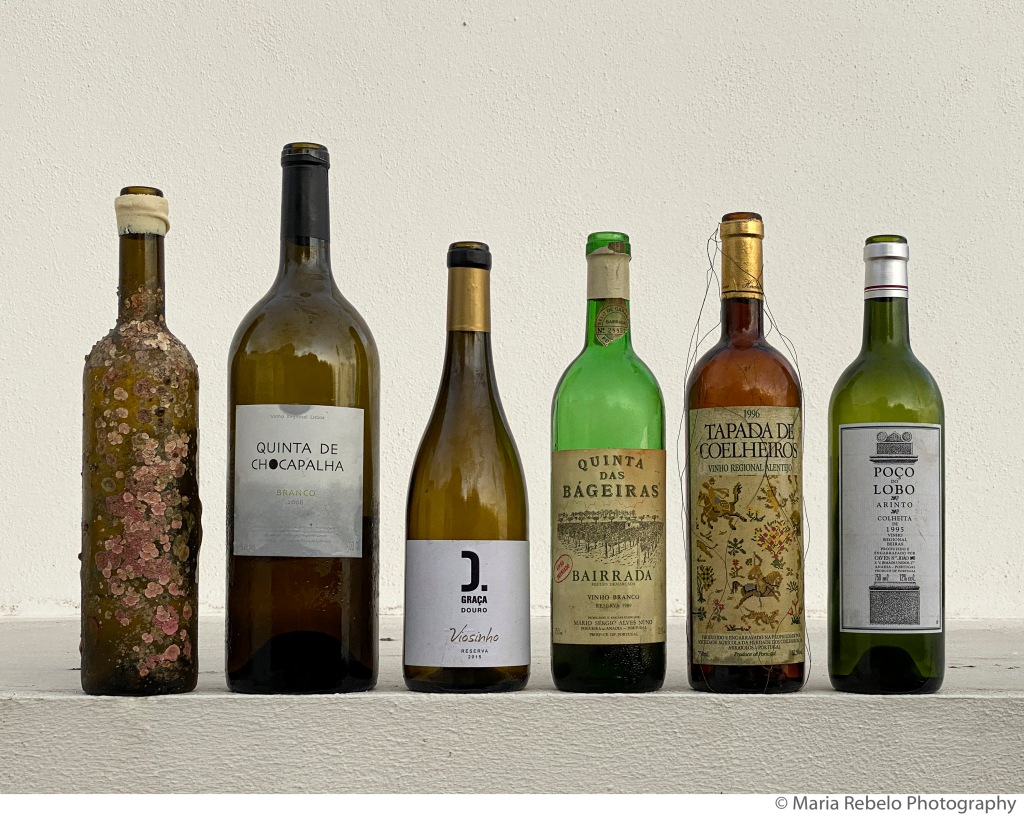
“White grapes come from a rare mutation of red grapes that probably occurred in Egypt in the 3rd millennium BC. Because of their rarity and the intense aromas of varietals like Muscat and Malvasia, white wines quickly gained the preference of rulers and aristocrats. In ancient times, old white wines were particularly prized. If a white wine survived the passage of time and was still drinkable, it was a great wine,” said Manuel Malfeito, a professor of enology, as a way of introduction.
Manuel insists on always tasting blind. “Tasting wine is tricky because our brain is an analogy machine, it starts asking: where did I try a wine like this one? And that is when we get in trouble. It is best to taste blind so we have no preconceptions.”
After dispensing these instructions, Manuel retreated to fill our glasses in the kitchen, so we had no chance of getting a glimpse of the bottles that guarded the precious nectars about to be served. He brought the glasses to the table and our sensorial work began.
The first wine had a pale-yellow color and a seductive citrus flavor. “Is it a high-altitude wine from the Douro region?” one of the friends asked. Manuel revealed nothing. Later, we learned that this wine was relatively young: it was a 2018 Serenada produced by Jacinta Sobral in Alentejo. It has a mature taste because it staged in the bottle for 9 months, 15 meters deep in the ocean near Sines. After the identity of the wine was revealed, we tasted it again and detected salty notes. Our brain is easily influenced by the information we feed it!
The second wine had a bright, luminous yellow color. Its aroma was discreet, almost imperceptible. But its taste was sumptuous, reminding us that wines are made to be drunk, not to be described. Yes, we can talk about the wine’s minerality and flint stone aroma. But words pale in comparison with the liquid radiance of this wine. It turned out to be everybody’s favorite. Later, we learned that this crowd-pleaser was a 2008 Quinta de Chocapalha magnum made by Sandra Tavares da Silva in her family estate near Lisbon.
The third wine was an elegant mineral wine that has great acidity and persistence in the mouth. This joyous nectar turned out to be the 2015 D. Graça produced by Manuel Malfeito and Virgilio Loureiro in the Douro valley.
The fourth wine tasted like an old sherry or Madeira; it was dry and evolved. It turned out to be a wine produced by Mário Sérgio at Quinta das Bageiras in 1989!
The fifth wine was a vivacious old wine with aromas of dried fruit and beeswax. It was dried and had a pleasant acidity. Where was it made? We would never guess. It was a 1996 Tapada dos Coelheiros, a famous estate in Alentejo, a warm region that is not expected to produce this type of wine.
The tasting ended with another outstanding wine: a 1995 Poço dos Lobos made from Arinto, a grape that is famous for producing wines that age well. This wine was no exception. It has a long, seductive finish and a bright freshness with notes of orange peel.
What did we learn from another master class with Manuel Malfeito? That we should taste wines without preconceptions in order to better discover and appreciate their qualities. And that the occasion makes the wine. The best wines are always those we share with friends!
